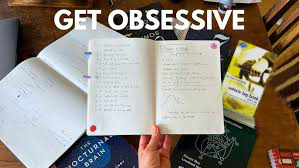
Good record keeping is probably the most effective tax tip going. This blog covers the record keeping requirements for cars, mobile phones and home office claims.
Vehicles:
In order to claim a vehicle you must “hold” the vehicle. If your employer makes the lease payments on the vehicle, your employer “holds” the vehicle. This is the case even in a novated lease arrangement. You can be considered the holder of a car even though it is not registered in your name. For example it might be in another family member’s name but you pay all the expenses associated with it. A spouse can be considered to hold the car on your behalf, they just need to complete a declaration of joint ownership.
Log Book Method:
Keep for 12 continuous weeks every 5 years. You must also record your speedo reading every 30th June.
The exact requirements are available here https://www.ato.gov.au/law/view/document?DocID=PAC%2F19970038%2F28-125&PiT=99991231235958 In summary record the date of each journey, opening speedo, closing speedo, reason for the journey and where to. Have a column for private kilometres and business kilometres, calculate the kilometres for the journey and initial the entry to show who is making it. Note there is a legislative requirement to make this entry as soon as practical after the journey ends and as soon as the 12 weeks period ends you should calculate the percentage of business use. You do not have to record private kilometres but it is best to do so to keep the habit and allow you to pick up the opening speedo reading from the previous trip if you forget to record it at the start of a business trip.
Keep receipts for all expenses. If the vehicle has a pay load capacity of less than 1 tonne you can do an annual fuel test rather than keep all your fuel receipts. A fuel test involves noting the speedo reading when you fill up, then next time you fill up noting the speedo reading again and keeping the fuel receipt. This will allow you to work out how many cents of fuel you use per kilometre. As you are taking the speedo reading every 30th June you know the kilometres travelled for the year, so you can estimate your fuel cost.
Kilometre Method:
This method simply requires a detailed reasonable estimate of the kilometres travelled. You are allowed to claim a maximum of 5,000 kilometres, a year, using this method. Note this is 5,000 kilometres per car, per owner of the car. So, in the case of joint ownership each owner could technically claim up to 5,000 kilometres.
Detailed reasonable estimate means that you can’t just claim 5,000 kilometres, you need to show how you worked this out. Consider keeping a diary of the kilometres travelled for each normal work related trip, for a month as a representative sample. Also recording each one off unusual trip during the year.
Mobile Phone:
You need a one month diary showing the ratio of work to private use of the phone, each year. Probably the simplest and most accurate way of keeping this record is to take screen shots of one month’s recent calls. Print them up and write a w for work or a p for private against each call.
Home Office:
If you are going to use the 70 cents an hour method you need to record every hour, including start and finish times, for the full year. Further, the 70 cents includes your mobile phone calls. To be able to claim both your mobile and home office expenses you will need to use the actual cost method and a 1 month representative diary. We have a spreadsheet that will guide you through either method of recording your home office expenses, just ask your BAN TACS Accountant for a free copy. If you are not a client it is available here for just $7.95 https://www.bantacs.com.au/shop-2/home-office-2024-and-ongoing/
For information on claiming travel expenses go to https://www.bantacs.com.au/Jblog/travel-allowance-substantiation-concession-more-work-than-substantiating/#more-1888
 Julia's Blog
Julia's Blog